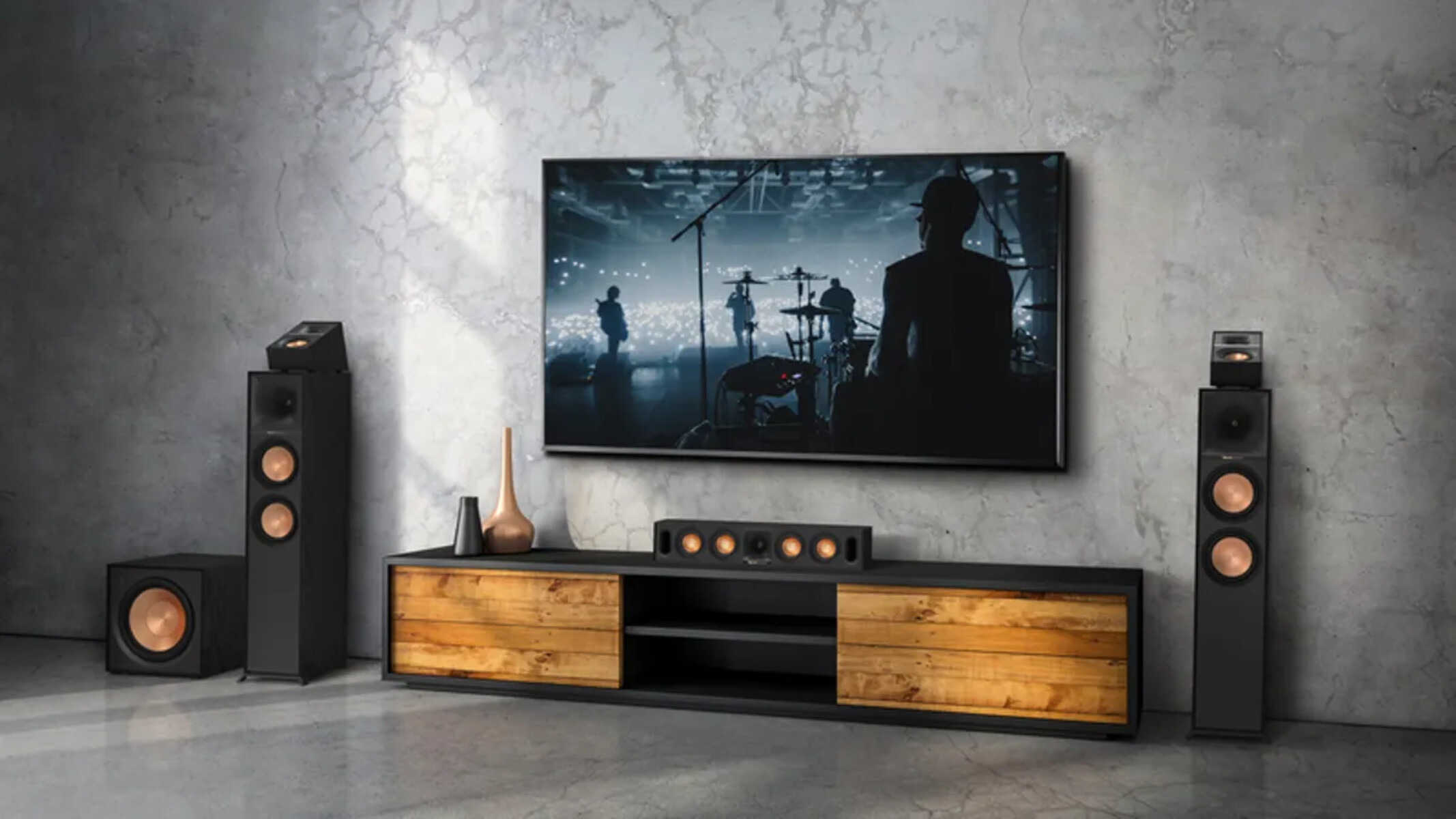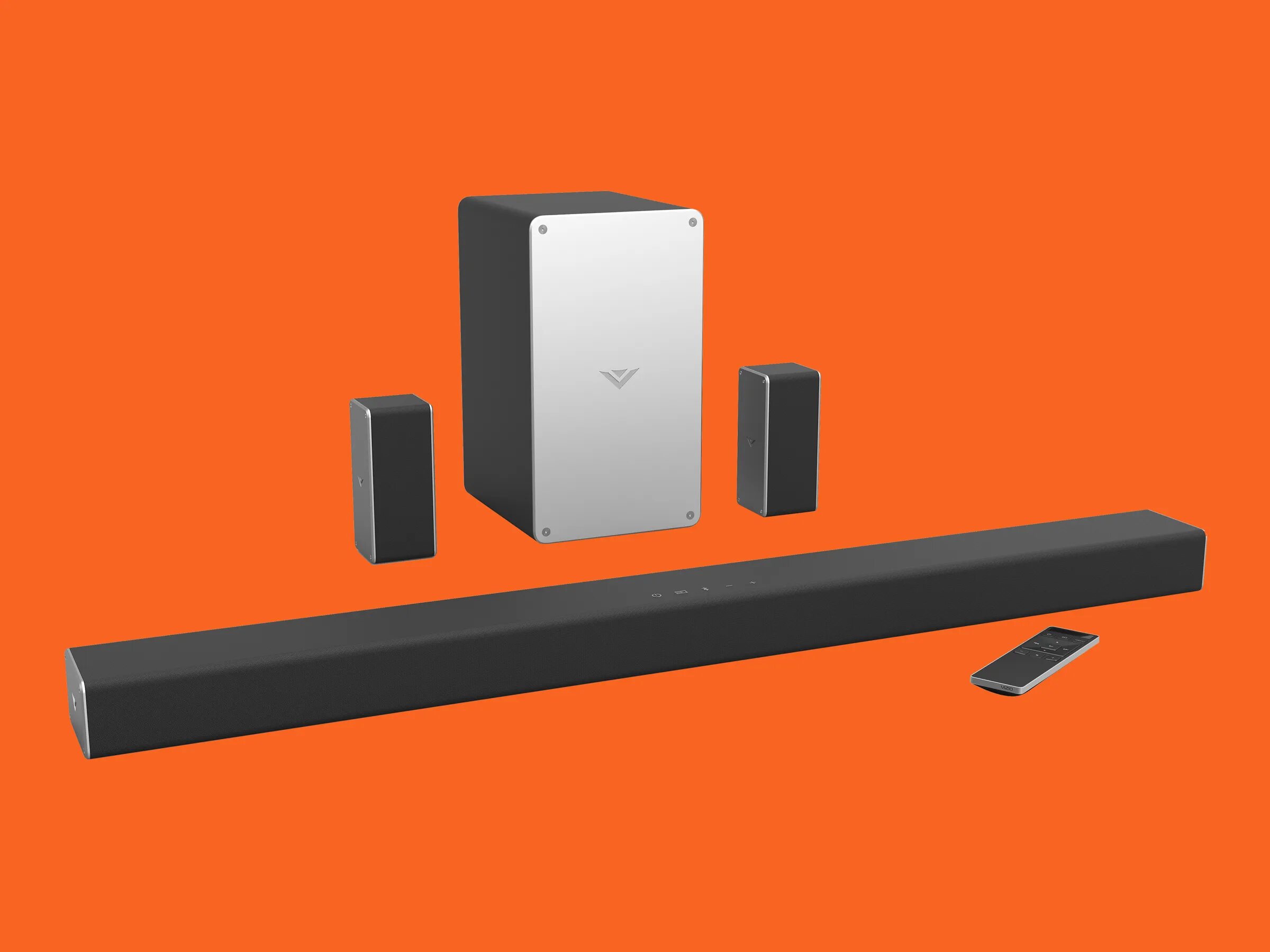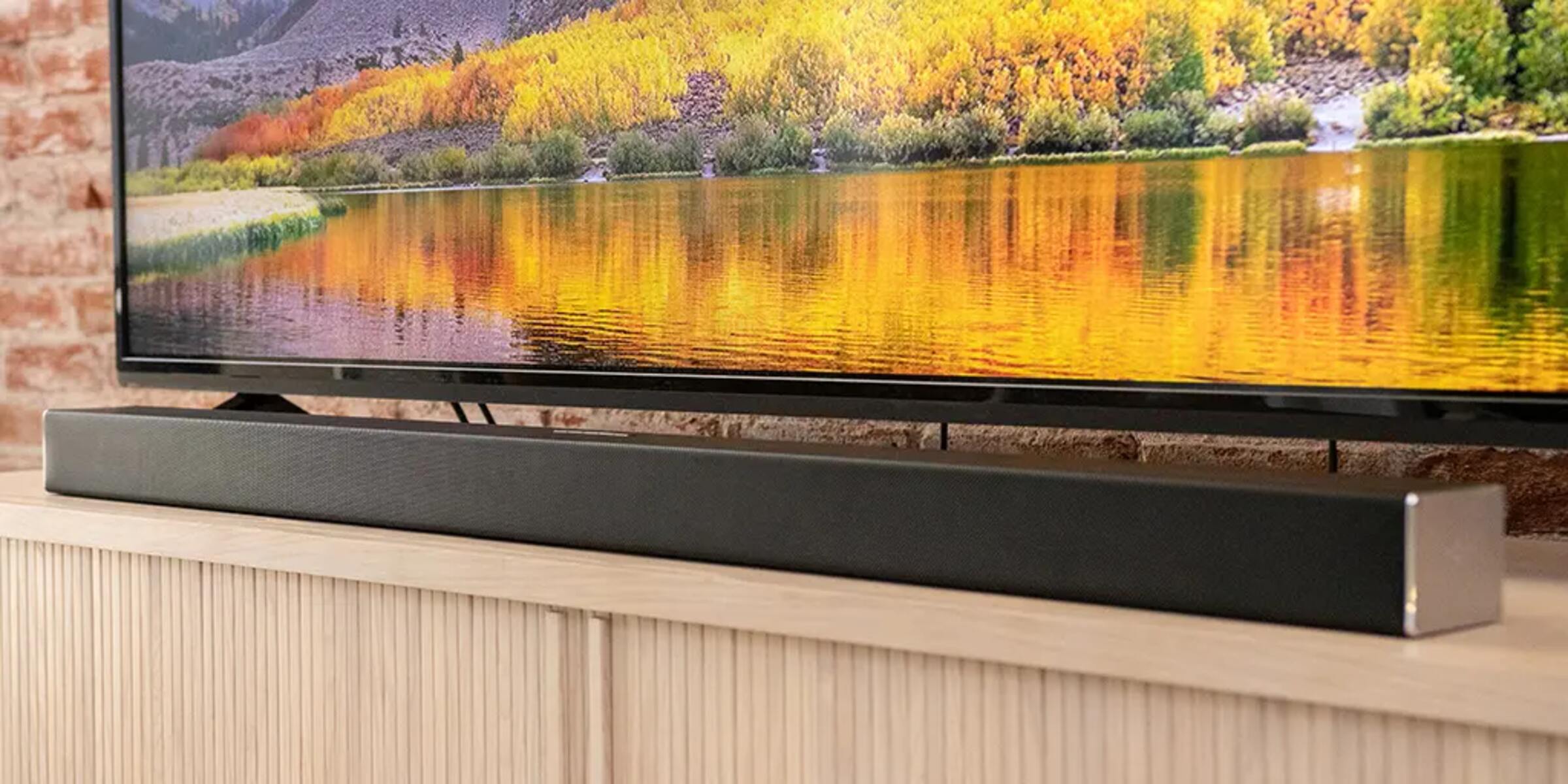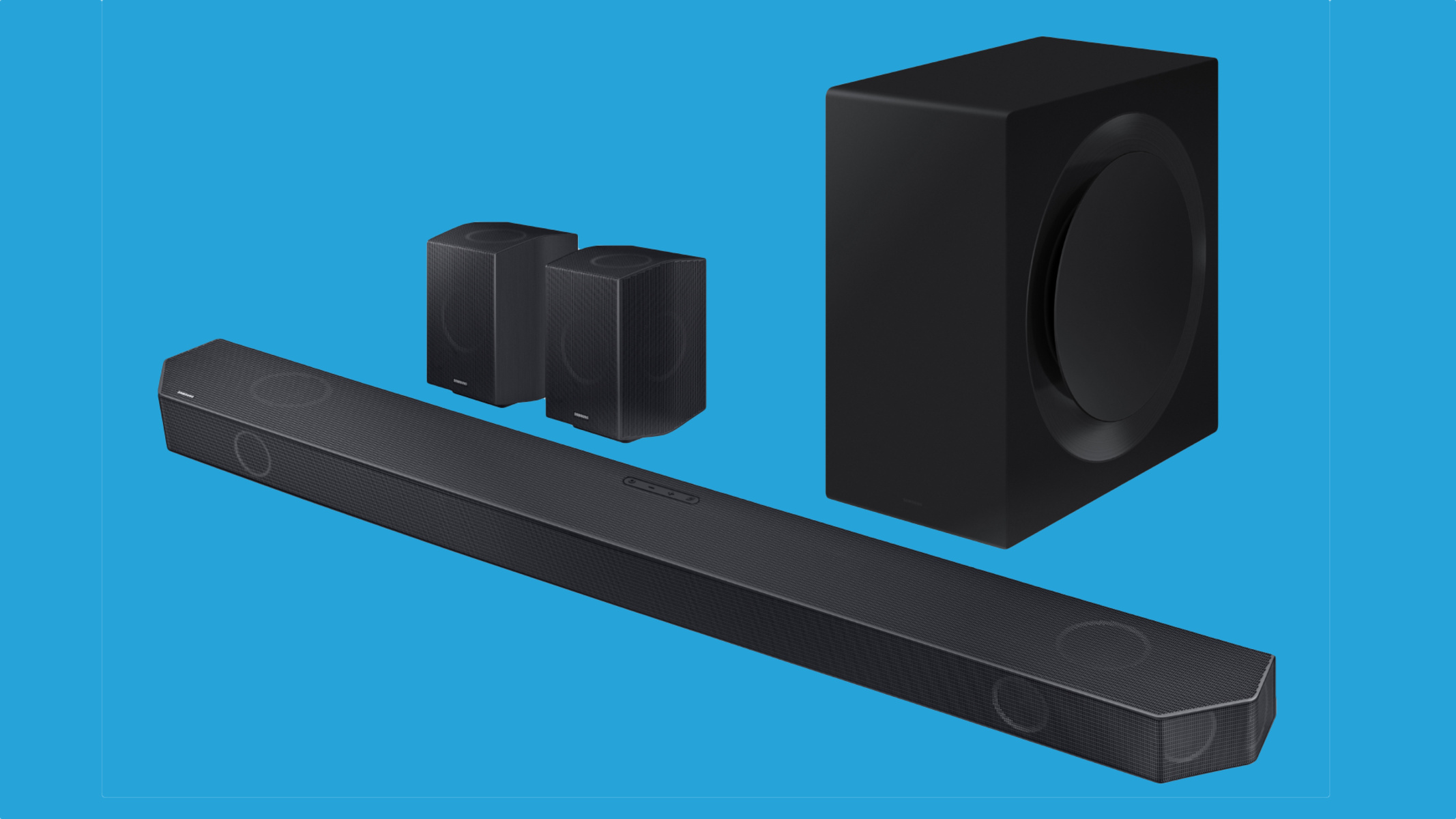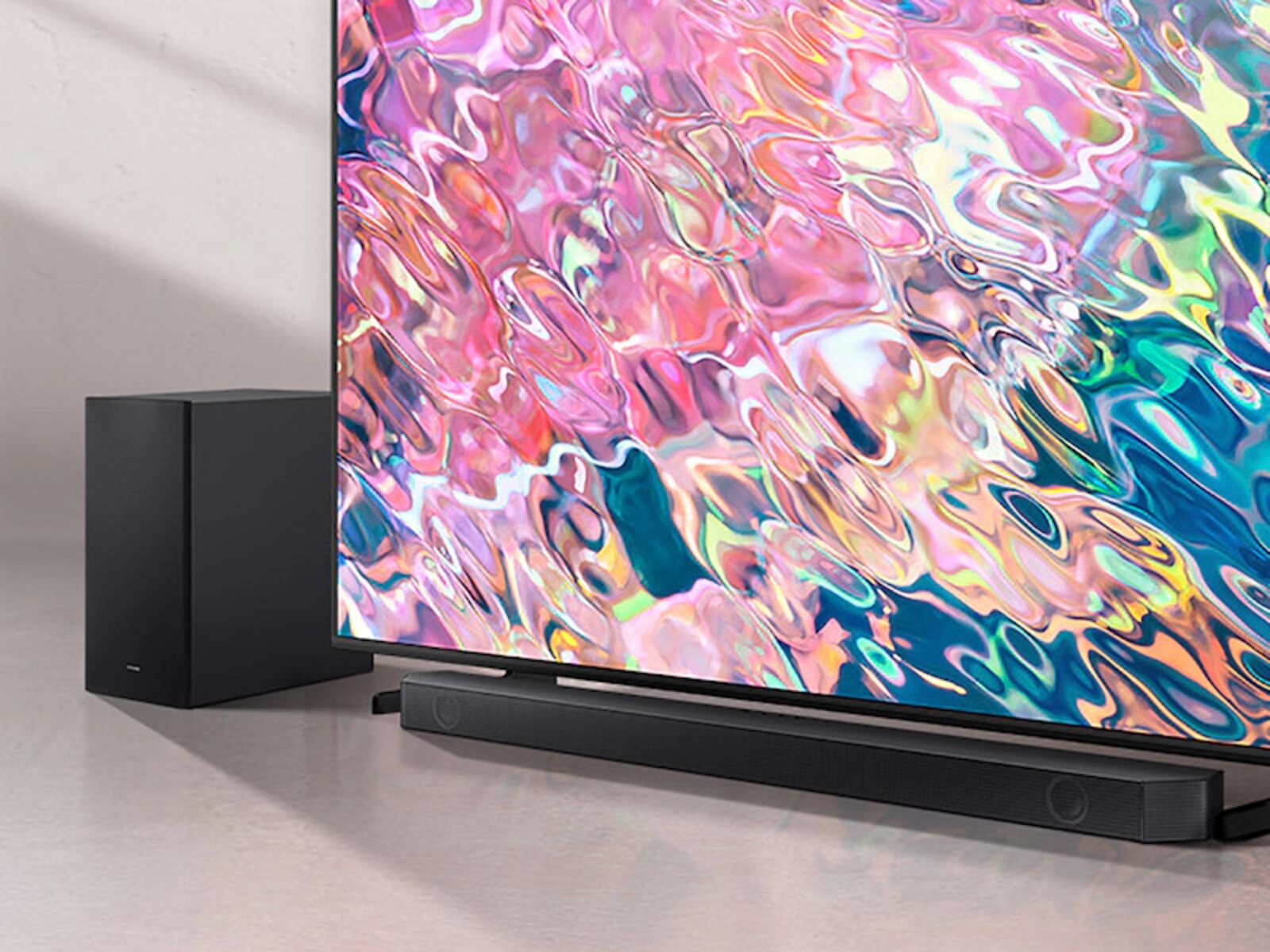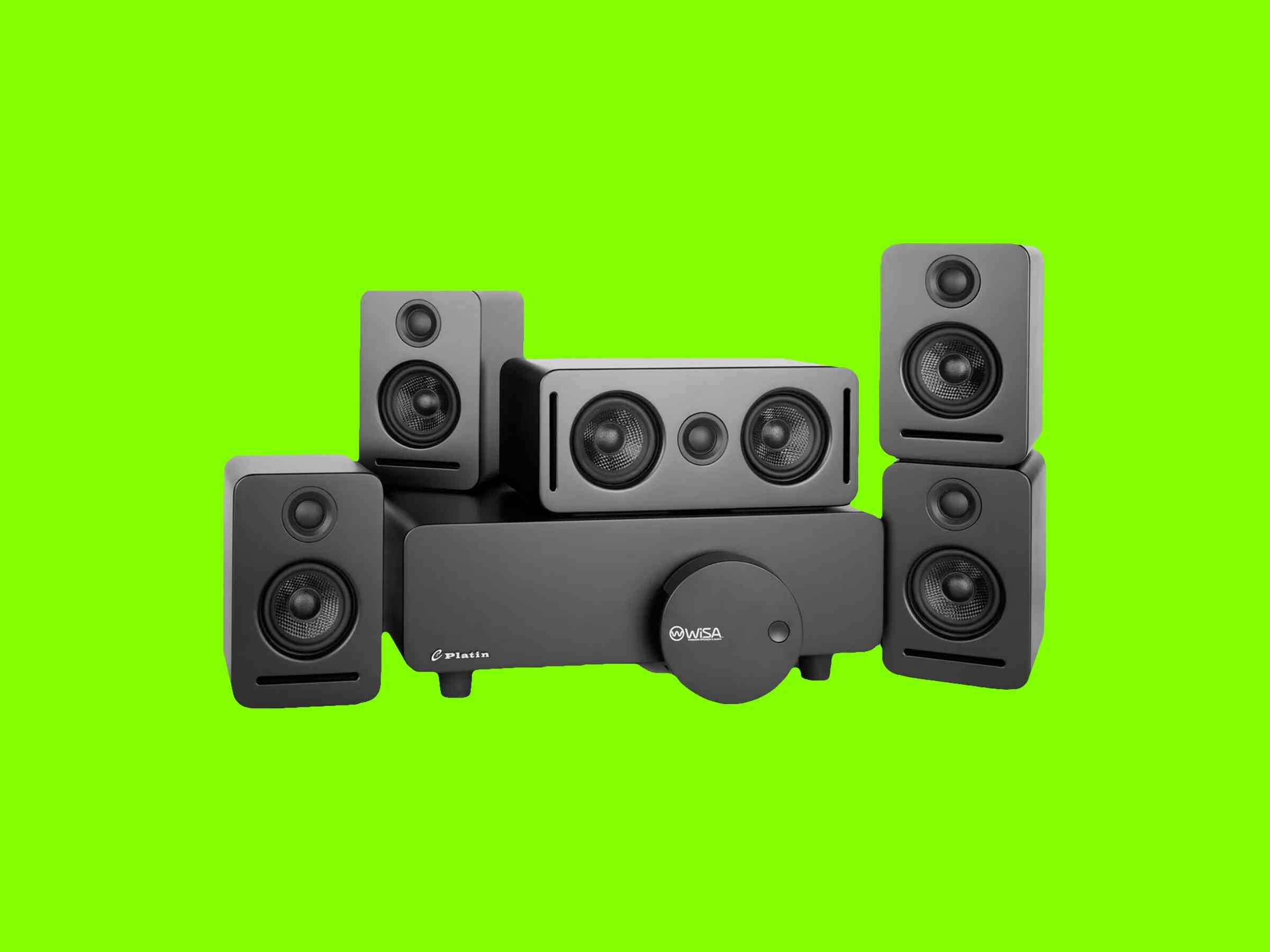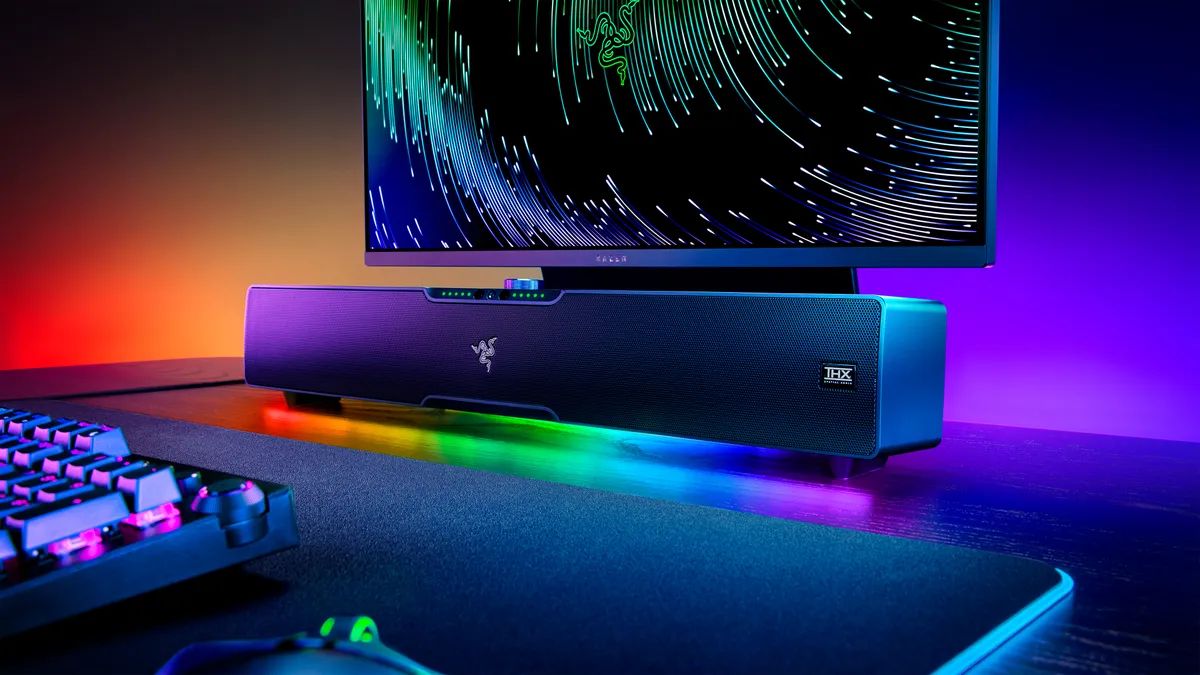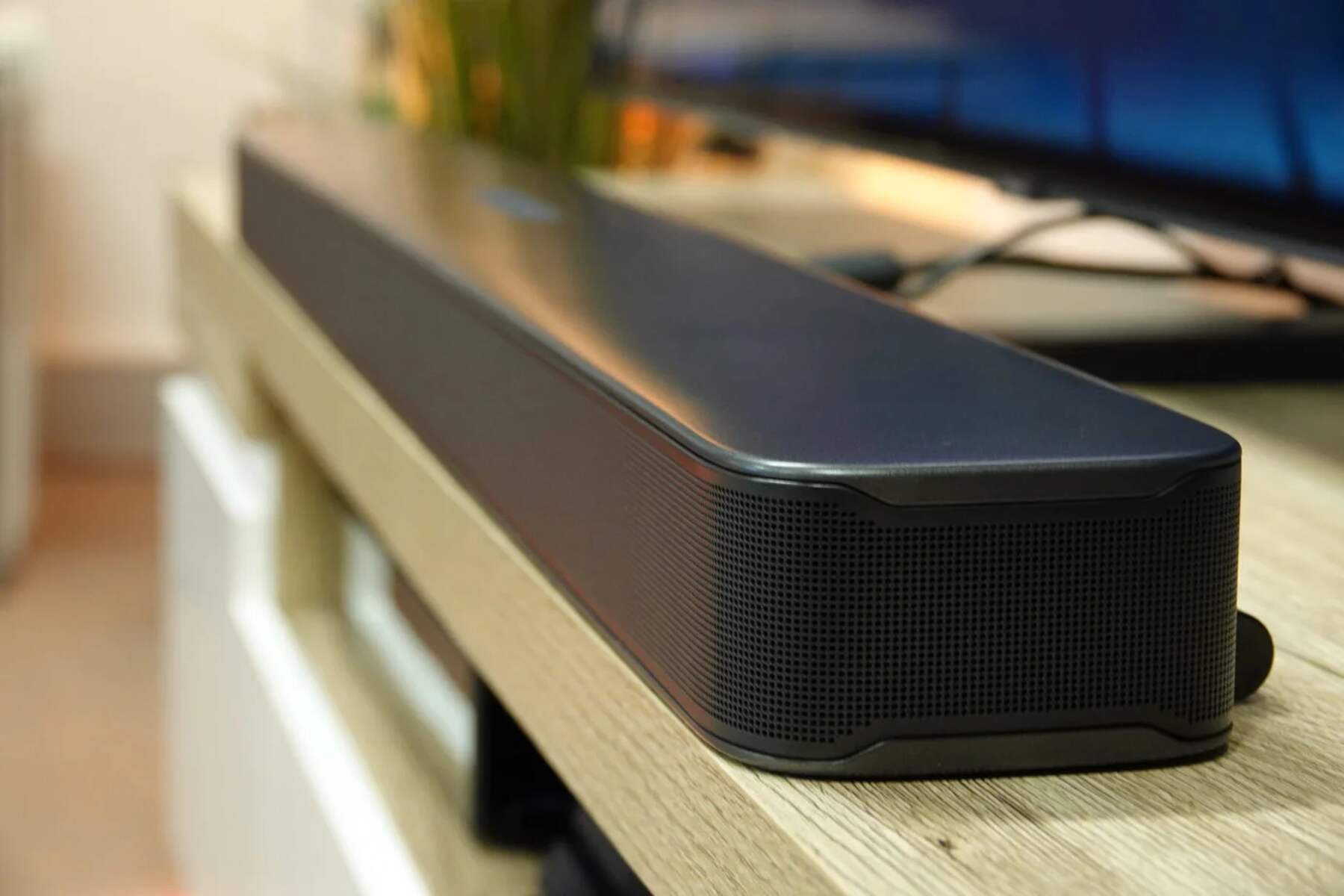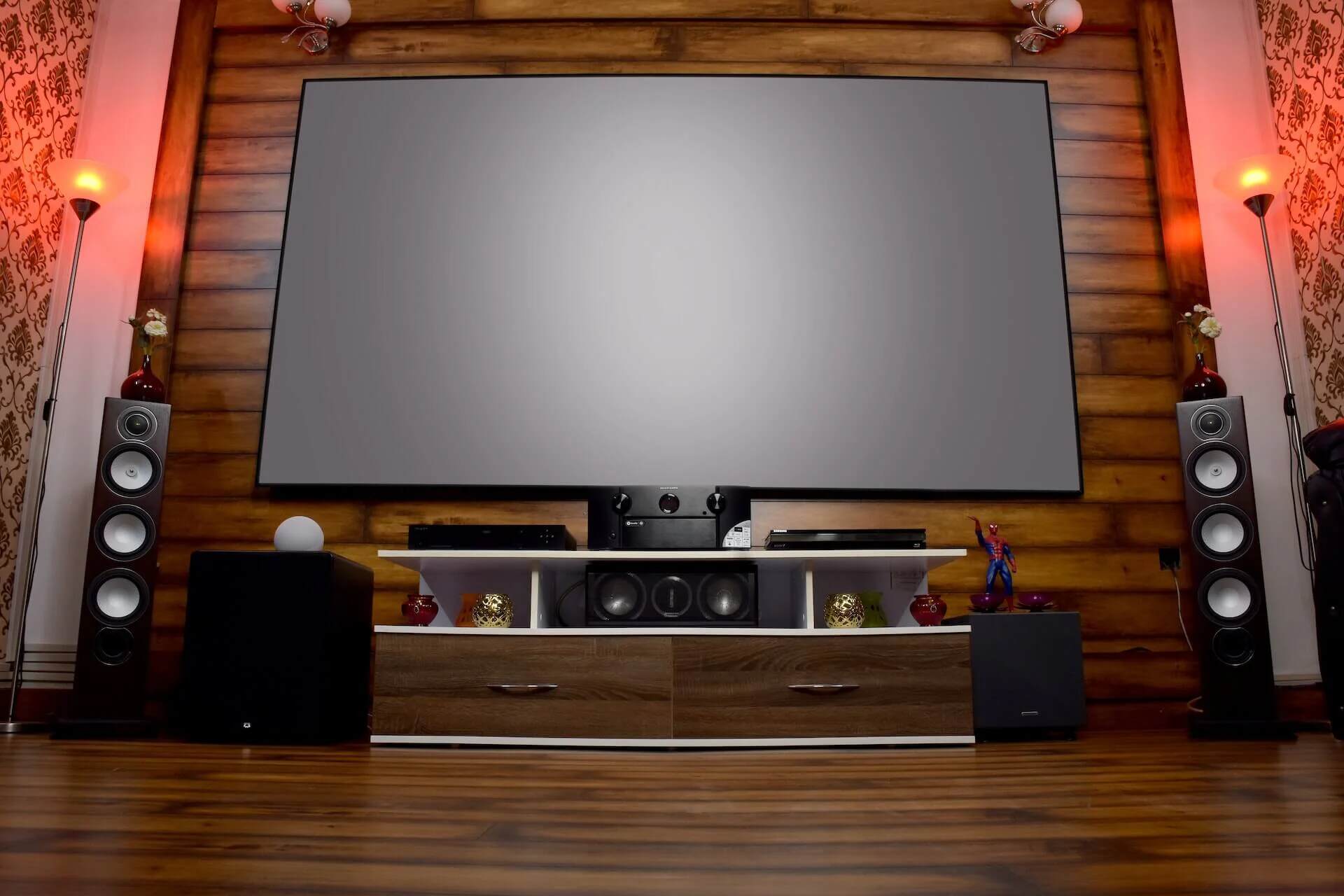Introduction
Setting up a soundbar with a different surround sound system can greatly enhance your home audio experience. Whether you are a movie enthusiast or a music lover, having a powerful and immersive sound system can make all the difference. However, it is important to ensure compatibility between your soundbar and the surround sound system you plan to use.
A soundbar is a sleek and compact speaker unit that is designed to deliver high-quality audio. It is a popular choice for those who want to improve the sound quality of their TV or music system without the hassle of multiple speakers and wires. On the other hand, a surround sound system is a more comprehensive audio setup that includes multiple speakers strategically placed around the room to create an immersive sound experience.
While it is typically recommended to use a soundbar with the matching brand of surround sound system, it is possible to set up a soundbar with a different brand of surround sound system. However, it is important to note that the compatibility between the two systems may vary, and certain features and functionalities may not work as expected.
In this guide, we will walk you through the process of setting up a soundbar with a different surround sound system. We will provide step-by-step instructions, highlight important considerations, and offer troubleshooting tips to help you achieve the best audio experience possible.
Compatible Surround Sound Systems
When setting up a soundbar with a different surround sound system, it is crucial to ensure compatibility between the two systems. While some soundbars are designed to work seamlessly with specific surround sound systems, others may be more versatile and compatible with a wider range of systems. Here are a few factors to consider when determining compatibility:
- Audio Inputs: Check if the soundbar and the surround sound system have matching audio input options. Most soundbars have an HDMI ARC (Audio Return Channel) input, which allows for easy connection with compatible surround sound systems. Other common audio inputs include optical, coaxial, and analog (RCA) connections. Make sure the surround sound system you have is equipped with the necessary audio output options.
- Audio Formats: Different soundbars and surround sound systems support various audio formats, such as Dolby Digital, DTS, and Dolby Atmos. Ensure that both the soundbar and the surround sound system support the same audio formats to ensure optimal compatibility and audio performance.
- Power and Amplification: Consider the power and amplification capabilities of both the soundbar and the surround sound system. The power output of the soundbar should match or exceed the power output of the surround sound system to ensure balanced audio performance.
- Wireless Connectivity: Many modern soundbars and surround sound systems offer wireless connectivity options, such as Bluetooth or Wi-Fi. Check if the two systems support the same wireless technology for seamless connection and audio streaming.
While it is not always possible to find an exact match between a soundbar and a surround sound system from different brands, compatibility can often be achieved by ensuring these key factors align. It is also recommended to refer to the user manuals or manufacturer’s specifications of both the soundbar and the surround sound system to determine their compatibility.
Keep in mind that while compatibility is important, it is equally essential to consider the overall sound quality, features, and user experience offered by both the soundbar and the surround sound system. In some cases, it may be worth investing in a soundbar and surround sound system from the same brand to ensure optimal performance and seamless integration.
Checking Soundbar and Surround Sound System Compatibility
Before proceeding with the setup, it is crucial to verify the compatibility between your soundbar and the surround sound system you plan to use. Here are some steps to help you determine compatibility:
- Read the user manuals: Start by carefully reading the user manuals of both the soundbar and the surround sound system. These manuals should provide information regarding compatibility requirements, recommended setup configurations, and any limitations or restrictions.
- Check the audio input and output options: Ensure that the soundbar and the surround sound system have matching audio input and output options. Look for common connections such as HDMI ARC, optical, coaxial, or analog (RCA) connectors. If the connections do not align, you may need additional adapters or converters to establish a connection.
- Consider audio formats: Take note of the audio formats supported by both the soundbar and the surround sound system. Verify if they are compatible and support the same formats, such as Dolby Digital, DTS, or Dolby Atmos. If the audio formats do not match, you may not be able to fully utilize the surround sound capabilities of the system.
- Check power compatibility: Ensure that the power output of the soundbar is compatible with the power input requirements of the surround sound system. Mismatched power levels can result in distorted or uneven audio performance.
- Consider wireless connectivity: If your soundbar or surround sound system offers wireless connectivity options, such as Bluetooth or Wi-Fi, check that they are compatible with each other. Verify if they use the same wireless technology for seamless communication and audio streaming.
- Research online: Look for online forums, reviews, or discussions where users may have shared their experiences setting up a soundbar with a different surround sound system. This can provide valuable insights and tips on compatibility issues and workarounds.
By thoroughly checking the compatibility between your soundbar and the surround sound system, you can avoid potential issues and ensure a smoother setup process. If you have any doubts or questions regarding compatibility, it is recommended to reach out to the manufacturers’ customer support for assistance and clarification.
Connecting the Soundbar to the Surround Sound System
Once you have confirmed the compatibility between your soundbar and the surround sound system, it’s time to proceed with the connection process. Here are the steps to connect your soundbar to the surround sound system:
- Choose the correct audio input: Identify the appropriate audio input on both the soundbar and the surround sound system. This could be an HDMI ARC, optical, coaxial, or analog (RCA) connection. Use the appropriate cables to connect the soundbar’s audio output to the matching audio input on the surround sound system.
- Ensure proper cable connection: Make sure all cables are securely connected. Double-check that the HDMI cable is firmly inserted into the HDMI ARC port if using HDMI ARC. For optical or coaxial connections, ensure the cables are properly connected to their respective ports.
- Power on the soundbar and the surround sound system: Turn on both the soundbar and the surround sound system. Follow the manufacturer’s instructions on how to power them on. Some soundbars may require you to manually switch the input source to the connected audio input.
- Configure audio settings: Access the soundbar and surround sound system settings to configure the audio output. Some soundbars may have a dedicated remote control or an app that allows you to adjust various audio settings such as volume, EQ, and surround sound modes. Consult the user manuals for detailed instructions on accessing and configuring these settings.
- Test the audio: Play some audio content, such as a movie or music, to test the audio output. Ensure that the sound is coming from all the speakers in the surround sound system and that the soundbar is functioning properly. Make any necessary adjustments to the volume levels or audio settings to achieve the desired sound quality.
- Calibrate the system (if applicable): Some soundbars and surround sound systems come with calibration features that optimize audio performance based on the room’s acoustics. Follow the instructions provided with the system to calibrate and fine-tune the audio settings for the best possible listening experience.
Remember that the specific steps and instructions may vary depending on the make and model of your soundbar and surround sound system. Always refer to the user manuals or manufacturer’s guidelines for accurate connection and setup instructions.
Adjusting Sound Options and Settings
After connecting your soundbar to the surround sound system, it’s important to take the time to adjust the sound options and settings to optimize your audio experience. Here are some key adjustments you may need to make:
- Volume control: Adjust the volume levels on both the soundbar and the surround sound system to achieve a balanced audio output. Find the right balance between the soundbar’s volume control and the volume control on the surround sound system to ensure consistent and enjoyable listening.
- Equalizer settings: Many soundbars offer equalizer presets or customizable equalizer settings that allow you to tailor the sound to your preferences. Experiment with different EQ settings to find the optimal balance of bass, treble, and mid-range frequencies that suit your taste.
- Surround sound modes: If your soundbar and surround sound system support different surround sound modes, such as Stereo, Dolby Surround, or DTS:X, explore these options to enhance the spatial audio experience. Each mode can create a different audio atmosphere, so find the one that best suits the content you are listening to.
- Dialogue enhancement: Some soundbars have special sound modes or features that prioritize dialogue and make it more distinct. If you’re having trouble hearing dialogue clearly, enable dialogue enhancement options to improve vocal clarity.
- Bass adjustment: Depending on your preferences and the room’s acoustics, you may need to adjust the bass levels to achieve the desired balance. Most soundbars have bass control options that allow you to increase or decrease the amount of low-frequency sound.
- Virtual surround sound: If your soundbar supports virtual surround sound technology, experiment with enabling this feature to create a more immersive audio experience. Virtual surround sound aims to simulate the effect of having speakers placed around the room, enhancing the overall soundstage.
Remember, the availability and specific options may vary depending on the make and model of your soundbar and surround sound system. It is recommended to refer to the user manuals or manufacturer’s guidelines for detailed instructions on adjusting the sound options and settings.
Take the time to fine-tune these settings to match your personal preferences and the type of content you are enjoying. This will help you achieve the best audio experience and make the most out of your soundbar and surround sound system setup.
Troubleshooting Issues with Soundbar and Surround Sound System Setup
While setting up a soundbar with a different surround sound system can greatly enhance your audio experience, you may encounter some challenges along the way. Here are some common issues that may arise and troubleshooting steps to resolve them:
- No sound: If you’re not getting any sound from your soundbar or surround sound system, ensure that all cables are securely connected and that the audio input and output settings are correctly configured. If using HDMI ARC, make sure that it is enabled in both the soundbar and the TV settings. Restart all devices and check if the sound is restored.
- Audio lag or sync issues: If you notice a delay between the audio and video or if the sound is out of sync with the visuals, adjust the audio delay settings on your soundbar or the audio delay settings on your TV (if available). Experiment with different delay settings until you find the appropriate synchronization.
- Inconsistent or uneven sound: If you experience inconsistent or uneven sound levels from different speakers in the surround sound system, ensure that all speakers are properly connected and that their respective volume levels are balanced. Some soundbars may have sound settings that allow you to adjust individual speaker levels for better audio distribution.
- Interference or audio dropouts: If you encounter interference or audio dropouts, especially when using wireless connectivity options, try moving the soundbar and the surround sound system away from other electronic devices that may cause interference. Additionally, ensure that your Wi-Fi network is not congested and that both the soundbar and the surround sound system are connected to a stable wireless network.
- Noise or distortion: If you hear unwanted noise or distortion in the audio, double-check that all connections are secure and that there are no loose or damaged cables. If the issue persists, try adjusting the soundbar’s equalizer settings, reducing the volume levels, or consulting the user manual for recommended troubleshooting steps.
- Compatibility issues: If you’re facing compatibility issues, such as certain audio formats not working or limited functionality between the soundbar and the surround sound system, check for firmware updates for both devices. Manufacturers often release firmware updates to address compatibility issues and improve overall performance.
If you encounter any other issues with your soundbar and surround sound system setup that are not mentioned here, consult the user manuals or reach out to the customer support of the respective manufacturers for further assistance. They can provide personalized troubleshooting steps based on your specific setup.
Remember to be patient and methodical when troubleshooting issues. Sometimes a simple adjustment or configuration change can resolve the problem and greatly improve your audio experience.
Conclusion
Setting up a soundbar with a different surround sound system can be a rewarding experience that transforms your home audio setup. By following the steps outlined in this guide, you can ensure compatibility, make the necessary connections, adjust the sound options, and troubleshoot any issues that may arise.
Remember to check the compatibility between your soundbar and the surround sound system, considering factors such as audio inputs, formats, power, and wireless connectivity. This will help you choose the best combination for your setup. During the connection process, double-check that all cables are securely connected and that both devices are powered on properly.
Once the setup is complete, take the time to adjust the sound options and settings to personalize your audio experience. Play around with volume levels, equalizer settings, surround sound modes, and other features to create the perfect audio atmosphere for your preferences.
If you encounter any issues during the setup or experience problems with sound quality or functionality, refer to the troubleshooting steps provided in this guide. Perform basic troubleshooting techniques such as checking connections, adjusting settings, and performing firmware updates if needed.
Remember that each soundbar and surround sound system may have unique features and setup instructions, so it’s important to consult the user manuals provided by the manufacturers for detailed information specific to your devices.
By successfully setting up a soundbar with a different surround sound system, you can enjoy a more immersive and captivating audio experience while watching movies, playing games, or listening to music in the comfort of your home.







